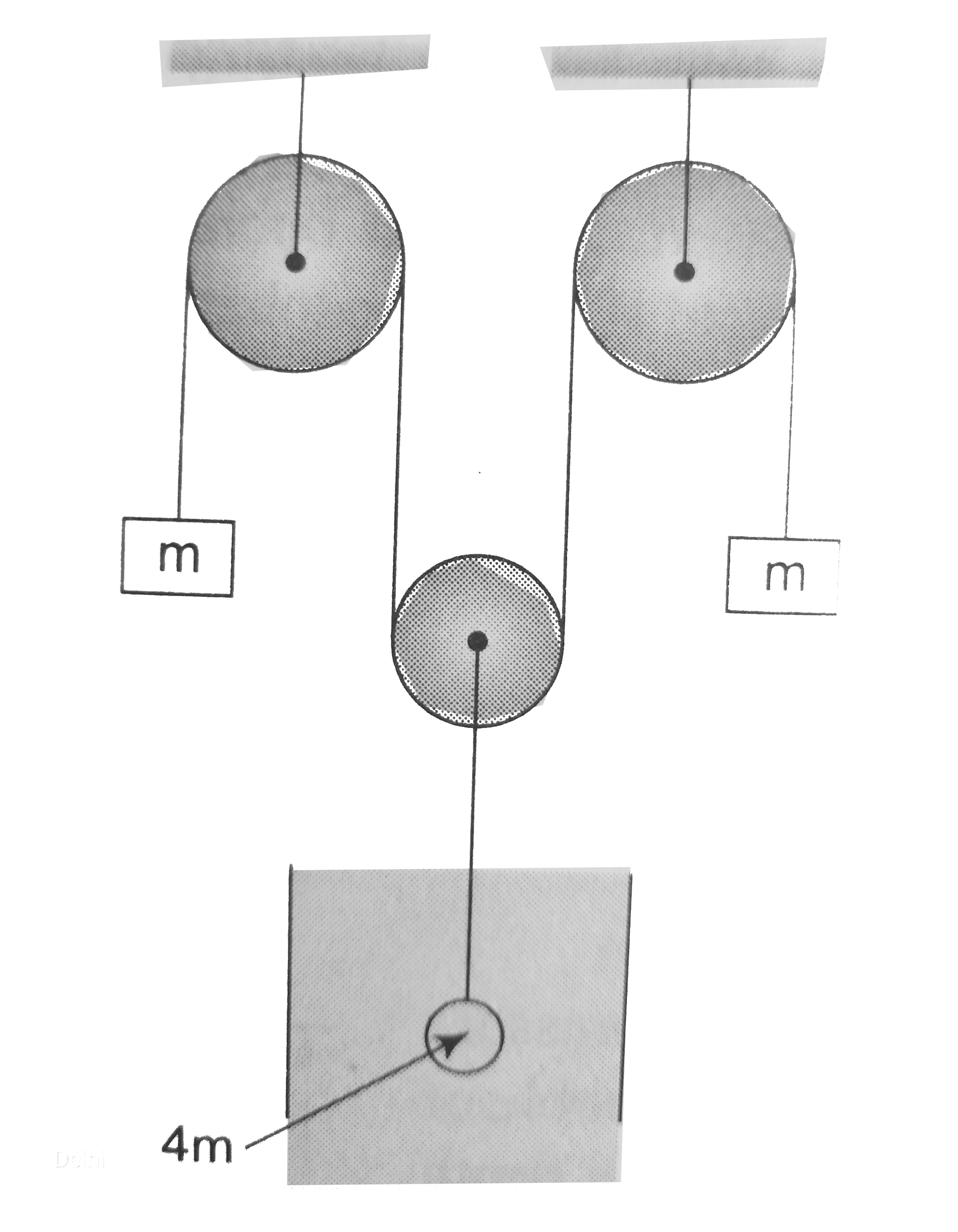A small spherical body of radius r and density ρ moves with the terminal velocity v in a fluid of coefficient of viscosity η and density σ . What will be the net force on the body?
4π3r3(ρ−σ)g
6πηrv
0
infinity
The correct Answer is:C
Given, ρ= Density of spherical body r= Radius of spherical body, σ = Density of medium (fluid) η= Viscosity of medium
Now, when the spherical body moves downwards in the fluid medium, with terminal velocity (say, Vterminal) then, sum of the viscous drag and upthrust will be equal to the weight of the spherical body.
∴Fv+FT−W
⇒6πηrvterminal+43πr3σg=43πr3ρg
⇒6πηrvterminal=43πr3(ρ−σ)g
⇒vterminal=2r2(ρ−σ)9ηg
⇒Fnet=0
Topper's Solved these Questions
- BULK PROPERTIES OF MATTERBOOK - MTG-WBJEECHAPTER - BULK PROPERTIES OF MATTEREXERCISE - WB JEE PREVIOUS YEARS QUESTIONS (ONE OR MORE THAN ONE OPTION CORRECT TYPE)
1 Videos
- BULK PROPERTIES OF MATTERBOOK - MTG-WBJEECHAPTER - BULK PROPERTIES OF MATTEREXERCISE - WB JEE WORKOUT (ONE OR MORE THAN ONE OPTION CORRECT TYPE )
10 Videos
- ATOMS MOLECULES AND CHEMICAL ARITHEMETIC BOOK - MTG-WBJEECHAPTER - ATOMS MOLECULES AND CHEMICAL ARITHEMETIC EXERCISE - WB JEE PREVIOUS YEARS QUESTIONS CATEGORY 1: SINGLE OPTION CORRECT TYPE (1 MARK)
3 Videos
- CURRENT ELECTRICITY BOOK - MTG-WBJEECHAPTER - CURRENT ELECTRICITY EXERCISE - WB JEE PREVIOUS YEARS QUESTIONS
21 Videos
Similar Questions

A spherical ball of mass 4m, density σ and radius r is attached to a pulley-mass system as shown in figure. The ball is released in a liquid of coefficient of viscosity η and density ρ(<σ2). If the length of the liquid column is sufficiently long, the terminal velocity attained by the ball is given by (assume all pulleys to be massless and string as massless and inextensible):
View SolutionDefine terminal velocity. Show that the terminal velocity υ of a sphere of radius r, density ρ falling vertically through a viscous fluid of density σ and coefficient of viscosity η is given by υ=29(ρ−σ)r2gη Use this formula to explain the observed rise of air bubbles in a liquid.
View Solution
Knowledge Check

A spherical ball of mass 4m, density σ and radius r is attached to a pulley-mass system as shown in figure. The ball is released in a liquid of coefficient of viscosity η and density ρ(<σ2). If the length of the liquid column is sufficiently long, the terminal velocity attained by the ball is given by (assume all pulleys to be massless and string as massless and inextensible):A29r2(2σ−ρ)gηB29r2(σ−2ρ)gηC29r2(σ−4ρ)gηD29r2(σ−3ρ)gηA drop of water of radius r is falling rhough the air of coefficient of viscosity η with a constant velocity of v the resultant force on the drop is
A16πηrvB6πηrvC√6πηrvDzeroThe terminal velocity v of a small steel ball ofradius r fal ling under gravity through a column ofa viscous liquid of coefficient of viscosity η depends on mass of the ball m, acceleration due to gravity g, coefficient of viscosity η and radius r. Which of the following relations is dimensionally correct?
Avr∝ηmgrBvr∝mgrηCvr∝mgrηDvr∝mg ηr
What is the radius of a planet of density ρ if at its surface escape velocity of a body is v.
View SolutionIf rho is density of falling body and sigma is the density of fluid then the terminal velocity of the falling body is proportional to
View SolutionA sphere of radius R and density ρ1 is dropped in a liquid of density σ. Its terminal velocity is v1. If another sphere of radius R and density ρ2 is dropped in the same liquid, its terminal velocity will be:
View SolutionIf rho is density of falling body and sigma is the density of fluid then the terminal velocity of the falling body is proportional to
View SolutionStatement -1 : A tiny shere of mass m and density ρ is dropped in a tall jar of glycerine of density ρ0 . When the sphere acquires terminal velocity v, the magnitude of viscous force is mg(1−ρ0/ρ).
Statement -2 : Viscous force on the body falling in a medium is F=6πηrv , where η is the coeff. of viscosity of medium and r is the radius of body
View Solution
